
Jan Švankmajer is a Czech film director, animator, writer, playwright and artist. He draws and makes free graphics, collage, ceramics, tactile objects and assemblages. In the early 1960s, he explored informel, which later became an important part of the visual form of his animated films. He is a leading representative of late Czech surrealism. In his film work, he created an unmistakable and quite specific style, determined primarily by a compulsively unorthodox combination of externally disparate elements. The anti-artistic nature of this process, based on collage or assemblage, functions as a meaning-making factor. The author himself claims that the intersubjective communication between him and the viewer works only through evoked associations, and his films fulfil their subversive mission only when, even in the most fantastic moments, they look like a record of reality. Some of the works he created together with his wife Eva Švankmajerová.

The National Gallery Prague, formerly the National Gallery in Prague, is a state-owned art gallery in Prague, which manages the largest collection of art in the Czech Republic and presents masterpieces of Czech and international fine art in permanent and temporary exhibitions. The collections of the gallery are not housed in a single building, but are presented in a number of historic structures within the city of Prague, as well as other places. The largest of the gallery sites is the Trade Fair Palace, which houses the National Gallery's collection of modern art. Other important exhibition spaces are located in the Convent of St Agnes of Bohemia, the Kinský Palace, the Salm Palace, the Schwarzenberg Palace, the Sternberg Palace, and the Wallenstein Riding School. Founded in 1796, it is one of the world's oldest public art galleries and one of the largest museums in Central Europe.

Otto Gutfreund also written Oto Gutfreund, was a Czechoslovak sculptor. After studying art in Prague and Paris, he became known in the 1910s for his sculptures in a cubist style. After his service in the First World War he worked in a more realistic style. His later work includes many small polychrome ceramic figures as well as architectural decorations.
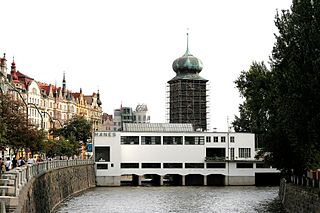
The Mánes Association of Fine Artists was an artists' association and exhibition society founded in 1887 in Prague and named after painter Josef Mánes.

Stanislav Libenský and Jaroslava Brychtová were Czech contemporary artists. Their works are included in many major modern art collections, such as the Metropolitan Museum of Art and the Victoria & Albert Museum.

Mikuláš Medek was a Czech painter. He united the artistic tradition of over three generations and thanks to the originality of his expression, depth and spirituality of his extraordinary work, he occupies one of the most prominent places in the Czech art history of the post-war period. Medek's entire work must be perceived in the context of the times, as it directly reflects the oppressive atmosphere of the communist regime in Czechoslovakia. He worked freely only for a short period between 1963 and 1969 and had only two exhibitions in Prague during his lifetime.
Jiří Votruba is a Czech painter, illustrator, and graphic designer - artist with characteristic style. His paintings were presented at almost 50 exhibitions all around the world. His work is divided into various themes, in recent years he is fascinated by consumer society and its attractivity.

Kamil Lhoták was a Czech painter, graphic artist, and illustrator. He was one of the members of Group 42.

Zdislava Rosalina Augusta Braunerová, called Zdenka was a Czech landscape painter, illustrator and graphic artist, whose work was influenced by her connection to Paris. She was the first female member of the Mánes Union of Fine Arts, and a patron of numerous other Czech artists.

Bob Rakušan is a Czech contemporary artist, who creates large-fired enamel works on black steel plate, scrap and salvaged objects, such as stove tops and ovens. The foundation layers of the enamel are often built on screen techniques inspired by the printing process. His work is rooted in drawings, studies and graphic prints. Besides landscapes and abstract and figurative composition, there is a recurring ocean theme in his works, inspired by his longtime occupation as a captain of sailing ships.
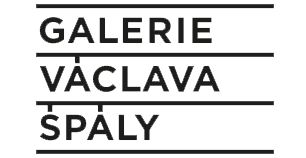
The Václav Špála Gallery is a Prague gallery of mostly contemporary art. It is located at no. 59/30 Národní třída, in the New Town of Prague. The gallery holds exhibitions particularly of works by living Czech professional artists of the middle generation who are among the best painters, photographers, and sculptors on the art scene today. The exhibitions regularly alternate between works of painting, photography, and sculpture.
Eliška Konopiská is a Czech printmaker, graphic artist, typographer, and illustrator.

Karel Špillar was a Czech painter and graphic artist.

Bedřich Dlouhý is a Czech painter and an Emeritus Professor at the Academy of Fine Arts in Prague.
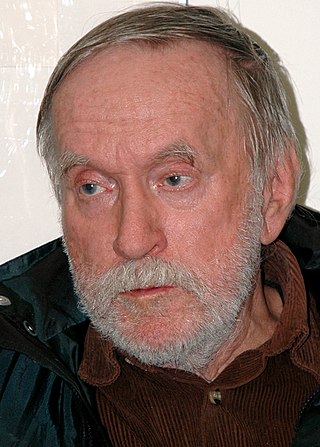
Zbyšek Sion is a Czech painter and printmaker, a co-founder of Czech structural abstraction art. His later works were mostly imaginative and illusionistic paintings, often on general warning theme or bearing a strong political symbolism.
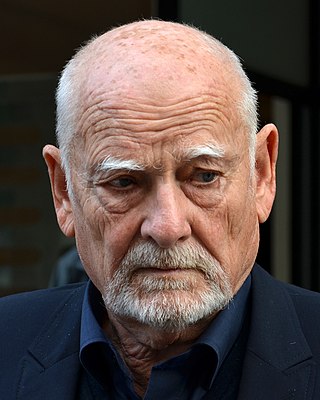
Theodor Pištěk is a Czech painter, costume designer, set designer and former racing driver. His costume designs and film sets are internationally acclaimed. He won an Oscar for his costumes for Amadeus, directed by Miloš Forman. For Forman’s next film, Valmont, Pištěk won a César Award and was nominated for an Oscar. In 2003 he received the Czech Lion Award for Unique Contribution to Czech Film, in 2013 he was awarded the Crystal Globe for Outstanding Artistic Contribution to World Cinema, and in 2017 he received the Golden Slipper for Outstanding Contribution to Films for Children and Young People.
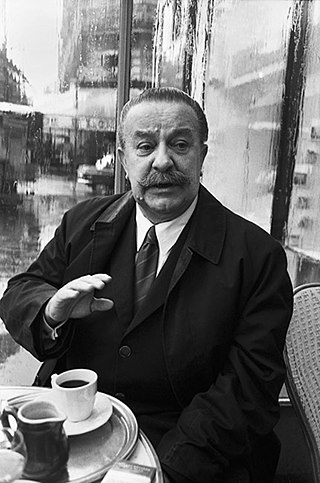
Adolf Hoffmeister was a Czech writer, publicist, playwright, painter, draughtsman, scenographer, cartoonist, translator, diplomat, lawyer, university professor and traveller. During the war, editor of the radio station Voice of America, after the war ambassador in Paris, since 1951 professor at the Academy of Arts and Crafts in Prague. He was a founding member of Devětsil (1920), chairman of the Union of Czechoslovak Visual Artists, a member of International Association of Art Critics. Hoffmeister represented Czechoslovakia at UNESCO, the PEN Club and other international organizations. Hoffmeister's career was ended by the Warsaw Pact invasion of Czechoslovakia in August 1968 and the subsequent occupation.

Jaroslav Vožniak was a Czech painter and printmaker, member of the Šmidra group of artists.

Jiřina Žertová, née Rejholcová is a Czech sculptor, painter, glass and art-industrial artist.

Zdeněk Beran' was a Czech painter, author of objects and installations, professor and vice-rector of Academy of Fine Arts, Prague.






















